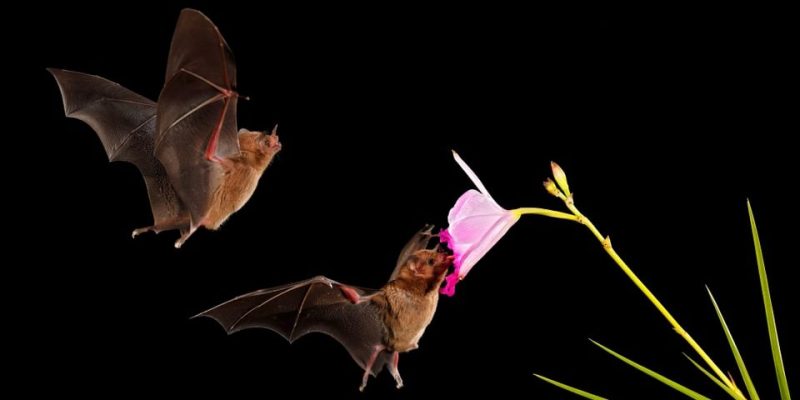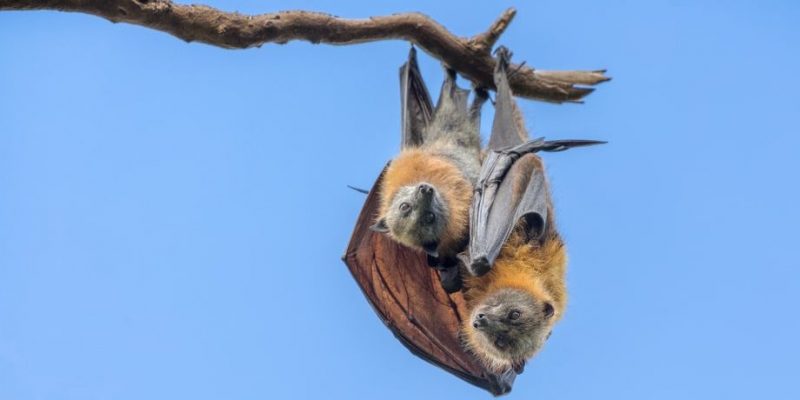We explain everything about the bat, its habitat, food and other characteristics. Also, how they reproduce and how long they live.

What is a bat?
The bats are the only mammals capable of flight. We are referring to a very numerous and varied set (around 1,100 different species, the second most diverse order of all mammals) of nocturnal animals, whose upper extremities constitute membranous wings around his hairy body.
In the past it was thought that bats were blind, probably because they fly and live in the dark. In fact, its name comes from ancient Spanish blind man (“blind mouse”), given its similarity to rodents, and this term in turn derives from the Latin mus (“mouse”) caeculus (blind). Today we know that they are not blind, they simply use an echolocation system to recognize their environment and capture their prey in the air.
The bats constitute a particularly numerous order called chiroptera which represents 20% of all known mammal species.
Adapted to all kinds of different ecological niches, these animals are the only vertebrates, along with birds, capable of flight. This capacity would have been developed during the Meocene, about 40 to 55 million years ago, when they diverged from their ancestor, some insectivorous mammal that lived mainly arboreal.
The presence of these animals in culture is also ancestral, generally associated with the demonic and the sinister, given their nocturnal habits, except in Chinese culture in which they are considered a good omen.
Hematophagous species deserve special mention, that is, they feed on the blood of other higher animals, known as “vampires” and associated with myths and legends of supernatural creatures that drink human blood.
Bat Characteristics

In general, bats are characterized by the following:
- are light animals whose bodies vary depending on the species, ranging from 30 millimeters in length and 2 grams in weight (in the case of the botfly bat) to 1.5 meters in length and 1.2 kilograms in weight (such as the alpine flying fox).
- Its body is made up of a head, a torso and some limbs, just like any rodent, but in its case the upper limbs form a pair of membranous wings, with which they can thermally insulate the torso during their rest periods.
- nightlife, usually rest head-down in caves or dark places during the day and during the night they come out to feed. Many species play an important role in the pollination of flowers, as do many birds and insects.
- have a complicated ultrasound emission system imperceptible to the human ear, with which they act as radar to detect what is in their environment.
- While their body tends to be more or less similar in all species (except size), their heads can be really diverse in their conformation, they can be more or less similar to rodents, or on the contrary, have a unique appearance.
- The bats are important reservoirs of viral diseases some of which can jump to humans (zoonosis), or to other species, as is the case of rabies, hepacivirus and possibly the Ebola virus. This is a problem to the extent that deforestation and human expansion encourage contact between new species of bats and people.
Where do bats live?
The bats occupy ecological niches in all habitats, and are present on all continents except Antarctica. Their nocturnal habits allow them to take refuge in caves, burrows, trees or even human buildings, as long as they find a dark and peaceful space in which to rest.
Some species are solitary, while others tend to form colonies of up to thousands or millions of individuals. 7% of the world's bat species are found in Australia, but as they are highly migratory species, they could very well have come from other geographies.
What do bats eat?

Around the 70% of bats eat insects or other arthropods (spiders, centipedes, scorpions), which they hunt during their night flights.
The remaining percentage may have eating habits as diverse as their very diverse morphologies and physiologies: some species are herbivores (among them, some are frugivorous and others feed on pollen, nectar and leaves), while others go to carrion and others are capable of hunting small fish, reptiles and rodents. There are also omnivorous species, which feed as the opportunity presents itself.
For its part, Hematophagous species, known as “vampires”, have specialized fangs to make small cuts in cattle and other domestic and non-domestic animals (seals, guanacos, even toads), and thus nourish themselves from the portion of blood that emanates, thanks to an anticoagulant that they have in their saliva.
How do bats reproduce?

Like all mammals, The reproduction of bats occurs in sexual and viviparous terms with very varied mating systems depending on the species. In general, they usually reach sexual maturity around one year of age, and present complex courtship dynamics, depending on whether they are species that lead a gregarious life (forming families or colonies), or if they are mostly solitary individuals.
Reproduction normally occurs on a seasonal basis, especially in latitudes where hibernation is necessary, and The duration of gestation can range from 40 days to 10 months.
Some species can prolong gestation to avoid bad weather or dry spells, or can even store the male's sperm for a more opportune time. Litters usually consist of one or two babies per birth, whose lactation begins a few minutes after birth.
How long do bats live?
The life expectancy of a bat It varies depending on the species, but its average longevity ranges between four and five years. Some larger species can exceed that figure and live twenty or thirty years, depending on how benevolent the habitat conditions are.
Continue with: Horse
References
- “Chiroptera” on Wikipedia.
- “Bats” in National Geographic.
- “Amazing Facts About Bats” in The Nature Conservancy.
- “Bat (mammal)” in The Encyclopaedia Britannica.





